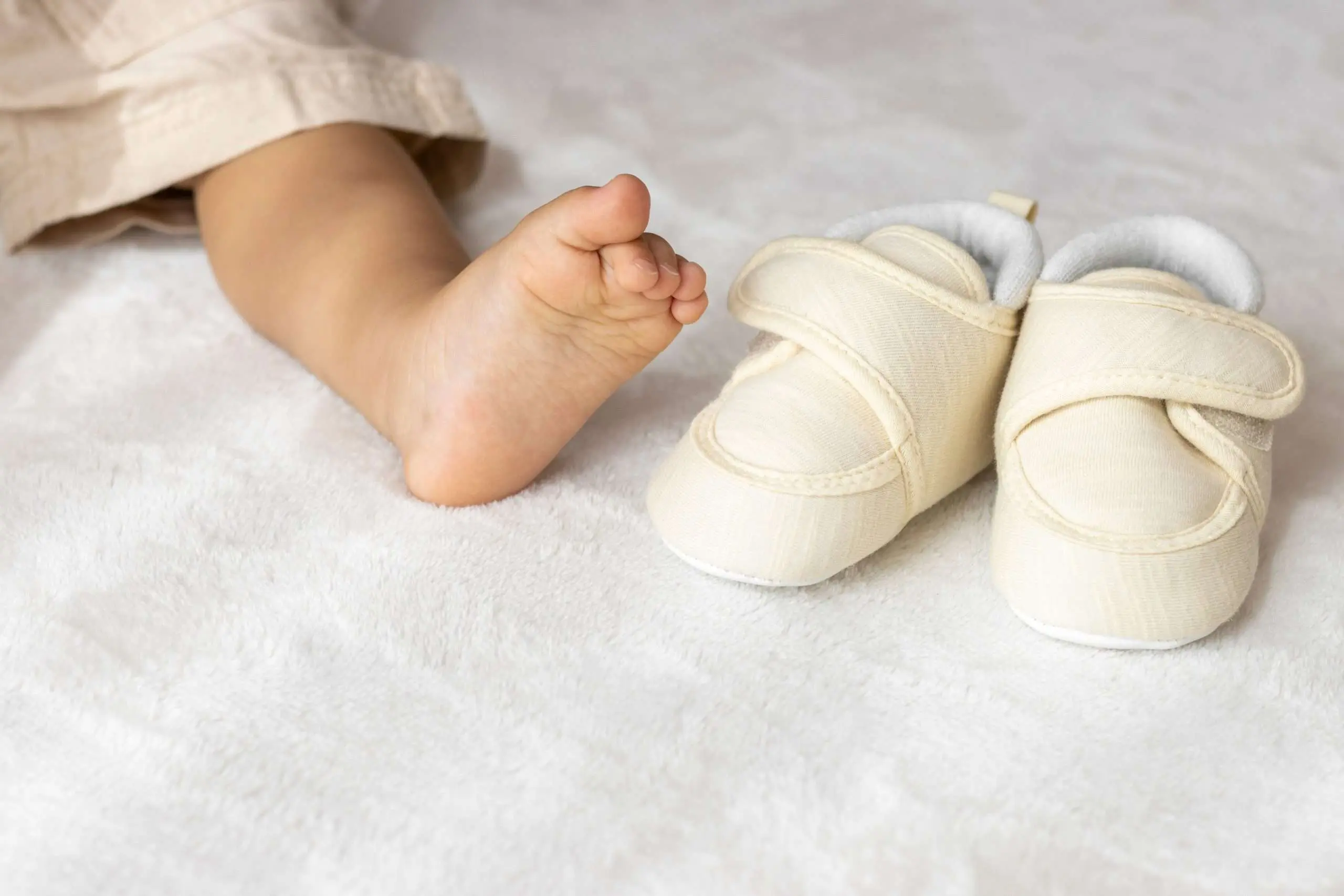
When a baby takes his or her first steps and stands up, the challenge of finding the correct shoes for them becomes real.
So, what is the best way to go from baby booties to walking shoes? Before all else, how can you make the best decision when there are so many options on the market? Let us look at the most important aspects of a baby’s foot to consider, as well as how to fit them according to their age, so that you can make an informed selection.
Is it necessary for babies to wear shoes?
The move from booties to shoes involves several steps.
Babies are born with flat feet, and as they grow older, their arches become more prominent. Shoes are not required until they can walk, and booties can only be used to protect their feet from cold, heat, or unpleasant surfaces until they start to walk on their own. To guarantee flexibility of mobility and growth, it is important to pick socks and booties that are not too tight.
When your baby begins to stand and walk, it is crucial to keep them barefoot as much as possible. This aids with proprioception, foot muscle development, and the prevention of abnormalities caused by inappropriate footwear.
When the infant takes their first steps, you can provide them with shoes made of soft, breathable materials. Shoes with non-slip soles and thicker heels are best in this situation. Your baby’s ankle is already sturdy enough when they start to stand, contrary to popular belief a few decades ago, thus they do not need to wear hard boots.
How to transition from booties to shoes while learning to walk
It is critical to understand the peculiarities of a baby’s foot to facilitate a seamless transition from booties to shoes. Around the age of 18 months, when the cartilage tissue begins to calcify, the feet of very young newborns begin to strengthen. Your baby takes his or her first steps when their legs and feet are strong enough to carry the weight upright.
Allowing them to explore the ground in bare feet enables them to learn about their surroundings while also exercising their small foot’s muscles and flexibility. It also enables them to become more aware of their body’s position in space and improve their balance.
As your baby gains confidence and stability, they can wear soft shoes with non-slip bottoms to protect their feet while also expanding their exploring radius.
When your child is old enough to go outside, you may start looking for shoes that are designed for the outdoors, with heavier materials but retaining flexibility.
How do you pick the best baby shoes?
To get the best shoes for your baby, you must first determine the size of their feet. You may have your baby try on a shoe and make sure their toes are not pressed against the tip, or you can make sure there is enough room in the shoe for your index finger to rest on the back of their foot.
If your infant is able to walk outside, you should get him or her shoes with a larger sole in the heel area for support, but that are still flexible enough to allow the toes to bend.
Remember to select a size that is comfortable for the baby while shopping for new shoes, or if they are a half-size, choose the size just above. Consider the shoe’s fasteners, which should keep the foot firmly in place.
If you want your baby to wear used shoes, inspect the sole for wear, the fasteners for wear and tear, and clean the inside of the shoe, especially if it is a summer shoe, to prevent germs or fungus from infecting your child.
Ensuring a healthy transition for baby’s feet from booties to shoes
You should measure your baby’s feet on a frequent basis to ensure you get the correct shoes for them. This can help your baby avoid the pain that too-tight shoes might cause. If you have any concerns regarding the stability or form of your baby’s feet, the FootNetwork’s podiatry clinics will be happy to help.